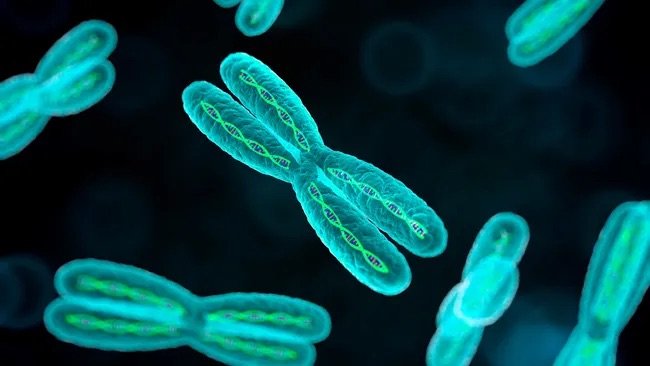Autism News from the Harvard Community
+ Click here for past issues of our newsletter
Tan-Yang trainee’s gather outside the lab to connect with their peers!
“Wet dog shakes” are abundant across mammals and research from the Ginty lab has revealed the underlying somatosensory mechanisms that drive this evolutionary response.
Dr. Walsh and his team have identified a chromosomal duplication mutation that dramatically increases the risk of an autism diagnosis.
A study from David Ginty’s lab in collaboration with Lauren Orefice describing four different genetic models of autism with aberrant touch reactivity as adults, yet with differing underlying mechanisms.
HMS News article from the Greenberg lab, describing a study identifying a novel pathway by which stimuli-induced transcription factors are degraded — a critical process that is linked to many neurological disorders, including ASD.
Dulac and her team have uncovered novel populations of hypothalamic neurons that are active during opposite social states (social isolation vs. social rebound) and revealed connectivity to brain regions associated with social behavior, reward, and other physiological needs.
HMS News article discussing a study from the Datta lab challenging the theory that male mice are preferred for behavioral studies. In fact, according to Datta and his team, female mice might be the better option.
HMS News article describing a novel, neuron-specific mechanism of DNA repair by Elizabeth Pollina and Daniel Gilliam from the Greenberg lab.
A study from the Fagiolini lab, describing deficits in long-range interhemispheric callosal projection neurons in a genetic model of CDKL5 deficiency disorder.
Prior to starting their own labs, Dr. Osterhout, and Dr. Choi, made significant contributions to the autism work of our center. We are excited to celebrate their success!
6/8/22
From the labs of Catherine Dulac and Xiaowei Zhuang
Harvard Gazette news article on how the brain controls symptoms of sickness.
See the original research article in Nature.
05/16/22
We brought together members of Tan-Yang Autism Center communities at Harvard and MIT to celebrate the generous gift from Hock E. Tan and K. Lisa Yang, establishing the Tan-Yang Center for Autism Research at Harvard.
3/29/22
From the lab of Bob Datta and colleagues
Deficits in sensory adaptation can lead to sensory overload, which is often observed for people with autism spectrum disorder (ASD). How do animals achieve this adaptation? Tatsuya Tsukahara, a Y. Eva Tan Postdoctoral Fellow in the lab of Bob Datta at Harvard Medical School shares new research addressing this question in the olfactory system of mice. His new study finds that olfactory sensory neurons are remarkably flexible and use a transcriptional adaptation to modify their responses based on their activity history.
See original research article in Cell.
3/17/22
From the lab of Pico Caroni & colleagues.
News article from the Friedrich Miescher Institute for Biomedical Research in Switzerland, highlighting a study led by Sebastian Kruettner, currently a Y. Eva Tan Postdoctoral Fellow in the Greenberg Lab at Harvard Medical School. While in the Caroni lab, Kruettner and his colleagues observed that exposing mice with an autism mutation (Shank 3 mutation) to a novel environment can trigger autism-like behaviors. This involves aberrant dopamine signaling in the brain—particularly, in the tail of striatum region, modulated by the prelimbic cortex. Introducing familiar objects into the novel environment can rescue some of the physiological and behavioral alterations noted in these mice.
See the original research article in Neuron.
See also this Spectrum article and audio clip about this work.
3/10/22
From the lab of Paola Arlotta and colleagues.
Bruna Paulsen shares new research from the labs of Paola Arlotta and colleagues, using organoid models of the human cerebral cortex to uncover cell-type-specific neurodevelopmental abnormalities that are shared across three different ASD risk genes.
See original research article in Nature.
12/15/21
From the labs of Gloria Choi and Jun Huh
HMS News article on new research from the labs of Gloria Choi (MIT) and Jun Huh (Harvard Medical School), co-first authors Eunha Kim and Donggi Paik, suggesting that infections during pregnancy can lead to high levels of the inflammatory signaling molecule interleukin-17a (IL-17a), which can not only affect brain development in the fetus, but also alter the maternal microbiome in a way that primes the newborn’s immune system for future inflammatory attacks.
See original research article in Immunity.
10/26/21
From the labs of David Ginty and Christopher Harvey.
HMS News article on new research from the labs of David Ginty and Christopher Harvey, with first authors Brendan P. Lehnert and Celine Santiago, that reveals mechanisms that may underlie the greater sensitivity of certain skin regions.
See original research article in Cell.
12/20/21
From the labs of Christopher A. Walsh and Michael E. Greenberg
Boston Children’s Hospital Answers blog post highlighting collaborative research focused on HARs -- human accelerated regions – which are the fastest evolving regions of the human genome. The authors provide epigenomic profiles of over 3,100 HARs and discover that nearly half of all HARs have features of gene regulatory proteins thought to be involved in neural development. This is particularly interesting in the context of autism because a past study from the Walsh lab suggests that some individuals with ASD may have increased mutations in HARs.
See original research article in Neuron.
7/8/2021
From the lab of Michael Greenberg.
The activity patterns of neurons orchestrate changes in gene expression that are critical for brain development and may be disrupted in neurodevelopmental disorders. This piece highlights two new studies from the Greenberg lab (Boulting et al., Stroud et al.), studying the DNA regulatory elements that drive activity-dependent gene expression in the developing brain.
See original research articles in Nature Neuroscience and Neuron




















